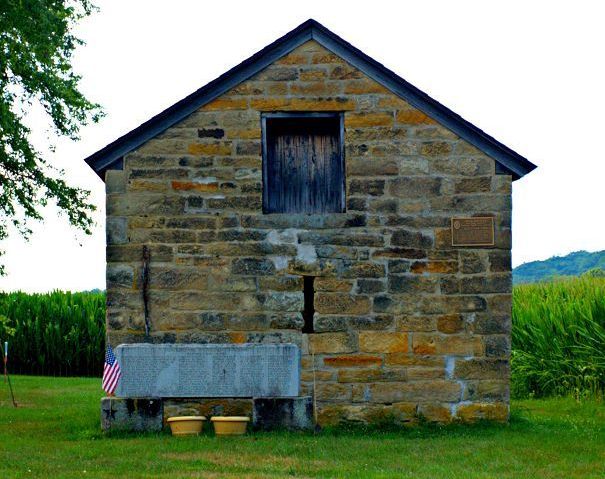The Old Stone Fort: Quite possibly Ohios oldest structure
Sometimes history is so completely shrouded in mystery that you may be completely unaware of certain events or landmarks. Such is the case with the Old Stone Fort in Coshocton County. This historic building is nestled on the southern bank of the Tuscarawas River in Coshocton County, not far from Newcomerstown.
The origins of this fort date back centuries. Historians say that it is quite possibly the oldest structure west of the Appalachian Mountains, and it is very likely to be the oldest structure in Ohio.
So who built it, when and why? Some experts think that it may have been built by Issac Evans, who was one of the first settlers in Coshocton County and the first to own the land where the Old Stone Fort now stands. Evans descendants, however, said that the fort was an antique in the early 1800s when they first came to Coshocton County. According to Marjorie Wright of the Coshocton Genealogy Society, [The fort] was built years before to protect the river travelers from Indians.
The fort also may have been built by French explorer DIberville, who was the successor to the famous French explorer LaSalle. However, historians and archaeologists date the fort to approximately 1679, and records archived in England show that the French didnt start building forts in the United States until the 1750s, and those first forts were in the Mississippi Valley.
The next candidate is George Croghan, a British fur trader who was known to be trading furs with the Indians in the Ohio Valley in the 1740s. Most experts agree that Croghan likely stayed at the Fort but did not build it because Croghans first visits to Ohio came some 60 years after the Old Stone Fort was built.
Thats how deep the mystery surrounding the Old Stone Fort is. Because the building is at least 60 years older than the first recorded travelers in Ohio, we may never know who built it or precisely why.
The building itself, however, gives us some clues. The fort is tiny, no more than a large shed by modern standards. Inside it measures just 14 square feet with 22-inch thick stone walls that were quarried from a location just north of where the fort stands today. There was once a loft that travelers could use to store goods up off of the dirt floor.
While small by todays standards, in the 1600s it would have been an excellent defense against raiding bandits or Native Americans. The fort was designed with narrow vertical gun slits on the north, west and east sides, flared in such a way as to make it easier for the occupants to fire through the slits while remaining safe from attackers outside. There is only one entry to the Fort with legends saying that the original door was built to three inches thick so as to make it strong against intruders.
The artifacts that have been found in and around the fort tell more of the story about this ancient building. Historians found the forts original lintel piece and a bronze compass of French design that may have been carried by an explorer. The compass was thought to be more than 200 years old when it was found in 1918, and it was still in perfect working condition. Today you can see this artifact and others at the Johnson Humrickhouse Museum in Coshocton.
Archaeologists also have found numerous rifle balls, arrowheads and flint knives, suggesting that the fort had been used by a variety of people and cultures over the centuries.
By the time that European settlers moved in to Coshocton County, the Old Stone Fort was long abandoned. For the next 150 years the fort would sit empty and neglected. In 1952, however, Manches Atkinson, the man who owned the property at the time, realized the importance of the Old Stone Fort. He deeded it over to the Coshocton Historical Society and gave them a right-of-way to access it on his land on the condition that the society preserve the building in as close to its original condition as possible.
According to the Coshocton County Port Authority, Many Coshoctonians contributed labor, time, supplies and money for the project. A dedication program was held May 14, 1953, for the restored Old Stone Fort. Since that time The Old Stone Fort has been restored a couple of times because of neglect and weather aging, Marjorie Wright said.
Nowadays the Old Stone Fort is nestled in a quiet farming community surrounded on three sides by cornfields. Youll never see this piece of ancient Ohio history if you stick to the main roads. To visit, head west on state Route 36 from Newcomerstown. Make a left on state Route 751 and then another quick left turn onto County Road 254. Drive around the bend in the road, and youll soon see the Old Stone Fort on the right side of the road, nestled in a small clearing along the edge of a cornfield.

